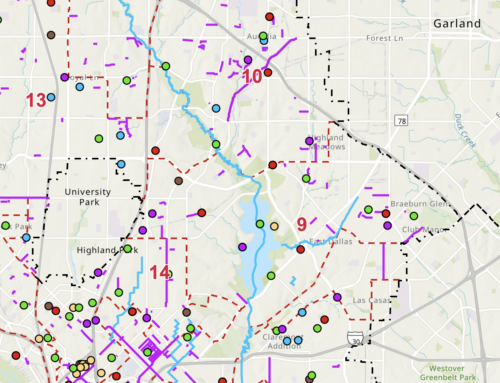Two years ago, the City of Dallas launched its Historic Preservation Incentives Program. The program’s success rate has been outstanding.
Downtown Dallas and our inner-city neighborhoods had become neglected as businesses and homeowners left them. Downtown is the home of historically and architecturally significant buildings dating from the early 20th century to the early post-war era that became vacant. Inner-city neighborhoods, which have the largest stock of historic homes, faced decline and a shift from homeowners to absentee landlords.
Expensive repairs are often needed to preserve historic buildings; once the improvements are made, taxes increase. Developers and homeowners could not find necessary funds for these expensive projects. A new program was needed to make adaptive reuse of Downtown building feasible, as well as keep taxes low to encourage homeowners to repair their neighborhood homes.
The solution was for the City Council to create the Historic Preservation Incentives Program. This program propelled the redevelopment of housing by offering incentives to stimulate private development in targeted areas. The goal was to stimulate improvements by offering tax incentives to promote revitalization of Downtown, the inner city and eight endangered areas.
These incentives include tax exemptions for historic areas and for at-risk neighborhoods, including exemptions based on vacancy, residential conversion and restoration.
Weary Downtown building facades are now reflecting a new and improved appearance. Also, key historic neighborhoods are being revitalized. As layers of paint and grime are stripped away, Dallas is rediscovering valuable historic landmarks.
The target areas include eight endangered historic neighborhoods, our historic districts and the in-town area. The in-town area includes Downtown and a one-mile radius surrounding it, embracing Deep Ellum, Millcreek, Roseland and Old East Dallas. East Dallas’ historic districts included in the program include Swiss Avenue, Munger Place, Peak’s Suburban and Alcalde Street/Crockett School. Our focus is to preserve the historical integrity of structures in and around the Downtown area.
Over this two-year period, approved abatements equal $4,476,778. These abatements were granted for 26 historic properties and have leveraged an estimated $40,469,183 of private investment. The program total for pending incentives is now $3,117,391, which will leverage another $26,422,403 in private investments. Many East Dallas properties are on the approved list and on the pending preservation incentives list.
District 2 is experiencing the program’s highest development impact. District 2’s current approved abatement incentives total $4,440,694 (99 percent of the program total) with $39,295,922 provided by private investment. This includes Downtown projects and revitalization areas in East Dallas.
District 2 has pending incentives in the amount of $3,006,070 (96.4 percent of the total pending). It is expected that these pending incentives will create an additional $25,433,877 in private development.
After reviewing the program’s progress, the conclusion is that Dallas has created a city program that actually works. The program promotes rehabilitation and investment in older neighborhoods while preserving the character, quality and integrity of the properties.
The tax incentives have provided the financial catalyst to rescue the City’s historic buildings. This is a working example of public policy that has and will continue to benefit the City’s tax base. By increasing property values and by making Downtown and East Dallas neighborhoods more appealing, these areas will continue to prosper.
The City’s Department of Planning and Development administers this program. Please contact Tiffany Strickland, urban planner in the historic preservation section, at 670-1497 to obtain information on this program.





